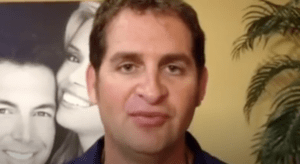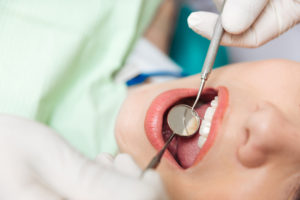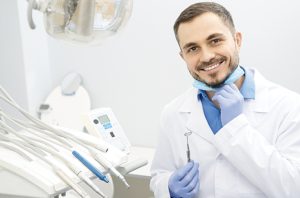Full mouth reconstruction involves at the process of replacing or rebuilding all of the teeth in the mouth. This process will combine restorative dentistry with cosmetic dentistry to improve the function, health, and appearance of the entire mouth. Any dental treatment that will in some way affect all of the teeth in the mouth could be considered full mouth reconstruction. Some dentists may refer to full mouth reconstruction as full mouth rehabilitation or full mouth restoration.
For individuals who have various dental issues throughout their mouths, it is essential to provide comprehensive treatment that improves both function and aesthetics. Generally speaking, someone who has several teeth showing signs of tooth decay, multiple teeth missing, teeth with old fillings that are failing, and / or teeth that are cracked or broken is someone who would be a good candidate for full mouth reconstruction. Full mouth reconstruction may be necessary to replace or repair teeth that are missing or damaged due to injury, trauma, long-term acid erosion, bite misalignment, tooth grinding, or simply poor dental hygiene.
Certain genetic conditions can also make someone a good candidate for full mouth reconstruction. These conditions include:
- Amelogenesis imperfecta: This is a tooth development disorder. This disorder causes teeth to be unusually small, pitted, grooved, discolored, and predisposed to to breakage and rapid wear. This defect can affect both primary and permanent teeth, and the severity can vary from person to person. There are 14 variations of amelogenesis imperfecta, which can be distinguished by the specific dental abnormalities and the patterns of inheritance.
- Dentinogenisis imperfecta: This is another tooth development disorder that causes the teeth to be translucent and discolored. Teeth will also be weaker than normal, which can lead to breakage, swift wear, and even tooth loss. This disorder can also affect both the primary and permanent teeth. There are 3 different types of dentinogenesis imperfecta, all of which have similar dental abnormalities.
- Ectodermal dysplasia: This is a group of disorders that that will cause two or more of the ectodermal structures to develop abnormally, one of those being teeth. This disorder is often characterized by abnormal or missing teeth.
Any of these three conditions would cause a patient to need extensive restoration of their teeth and could possibly make them a candidate for full mouth reconstruction. However, it is not necessary to have a genetic condition for a patient to require full mouth reconstruction.
Depending on the patient’s specific state of dental health, various procedures may be required in a full-mouth reconstruction. These may include:
- Gum tissue grafting
- Preparation of tooth surfaces for the placement of bridges, crowns, or veneers
- Extraction of damaged or broken teeth
- Orthodontics to move teeth into proper position
- Placement of dental implants
- Bone grafting to support implant placement
- Placement of permanent restorations, such as onlays or bridges
A full mouth reconstruction will require several dental appointments and will likely be completed in phases. Patients may need to wear temporary crowns, dentures, or other dental appliances until permanent reconstruction is completed.
















